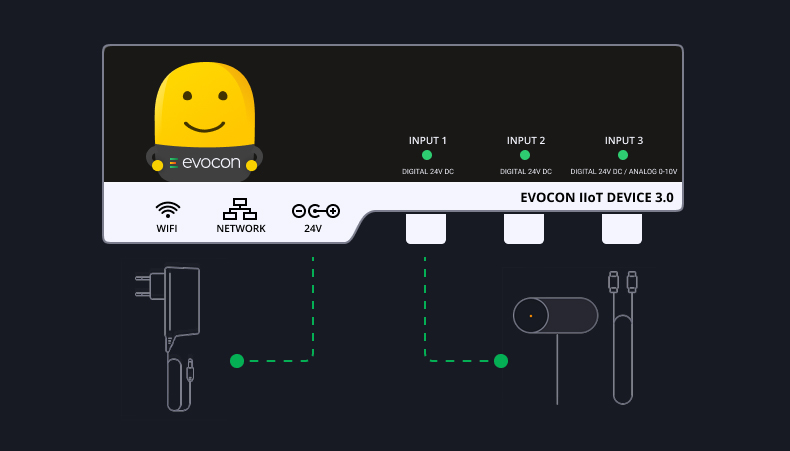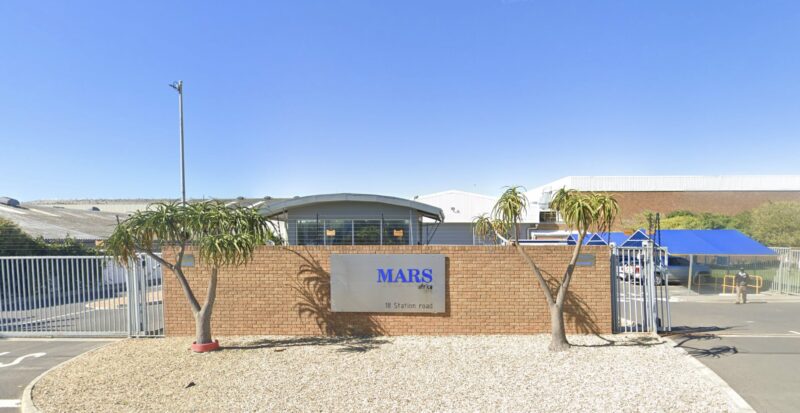The decision to invest in an OEE tracking software will have a long-lasting impact on your company’s Lean journey. And how you implement and communicate OEE to your shop floor is critical.
What Are the Key Aspects When You Communicate OEE Implementation to Your Shop Floor?
We know that OEE tracking is highly effective for management and supervision. But the main question is how do your machine operators feel about it? Based on Evocon’s experience with manufacturers from 12 different industries the overall effectiveness of an OEE system is dependant on how you communicate OEE to your shop floor.
The sooner you involve your machine operators, and the more transparent you are, the more successful you will be. Tell the operators what you want to accomplish with the software, involve them in the decision making and let them help you do it.
When to involve your machine operators?
Before you start to implement an OEE monitoring software, make sure you involve your machine operators. Involve them in the decisions of how and where to measure each production machine or line, and what the different machine breakdown causes will be. You can read more about this in our article: How to define machine breakdown causes?
Remember there is a natural fear or even resistance to change of any sort. Once you install an OEE tracking software, you will be monitoring the very machines operators are working on. Keep in mind that many people will take this personally. Your operators spend at least one-third of their workweek at your plant and at their machines. It’s like you are rearranging their living room at home.
Initially, when you communicate OEE to your shop floor, you should involve the reasons your company has decided to measure OEE. And why you are implementing an automatic system for this. Keep it simple. Remember these first sessions are not training sessions, but rather your introduction into what exactly OEE is, why it’s important, and how you plan to measure it.
Most importantly, begin to explore with your operators what OEE software will mean to them as this is the biggest concern for most team members in the beginning. Be careful and be honest. One mistake can derail your efforts before you begin. Make sure that your people understand that it is a tool that helps make their job easier.
Read our article: How do Machine Operators Benefit from Evocon?
A successful round of initial communication can set the stage for a robust and meaningful OEE software deployment.
Start your OEE implementation journey
Discover the true potential of your factory. Free for 30 days.
How to manage the understanding and expectations regarding OEE?
Be clear about what insights the company hopes to gain. Assure your operators that you are not out to catch people not working hard enough, or keep a close eye on them during their shifts. Even worse, that you are not trying to increase OEE so that you can reduce your employee headcount.
Most people want to do a good job every day. They want the company to make money to ensure their job security or opportunity for advancement. But making more money for the owner or the shareholders is seldom a driver for their daily behavior.
Most of the things that frustrate your machine operators are the same things that frustrate management and bring down a company’s Overall Equipment Effectiveness. They don’t like the recurring problems that cause their machines to stop running or produce poor quality. It means constant calls to the maintenance department and poor quality brings extra scrutiny by inspectors or supervision. Explaining to them that reliability will not only increase their autonomy but also their safety can be a starting point for a discussion that is not threatening.
Furthermore, explaining that a history of downtime reasons is in actuality a record of reliability. And you can use it to determine expectations for each operation. The process also helps uncover problems that might otherwise go unnoticed. And you can use this information to discuss and find solutions collaboratively in teams.
These teams include operators, engineers, maintenance mechanics, and any other relevant experts within the company. This will give the operators the reassurance that they aren’t just being watched more. Instead, they are playing a crucial role in developing expectations and standards.
Considerations before beginning communication sessions
Managers should remember that most people really don’t like it when someone is measuring and monitoring them. An OEE tracking software is without a doubt measuring the processes within your plant. You must be careful that your data collection and analysis of that data measures your processes and machines, and not your operators. Resist any inclination you may have to blame the machine operator.
There will be a delay in receiving your initial data from the software and actually having enough data to draw useful conclusions on any metrics. Consider beforehand how you will manage this data during the collection period. Instead of jumping to conclusions, collaborate with your operators on the initial data. Determine these initial discussions ahead of time. Don’t tell the machine operators that your goal is to increase efficiency so the company will be more profitable. This is not a motivator for most shop floor employees.
Instead, let them know that they can expect their frustration levels to come down because now the management and maintenance staff will be able to see what they experience every day.
Discuss the ways that an OEE tracking software will allow them more autonomy in their jobs. Which is different than just telling them they will have more autonomy. Once you enable operators to make their contributions in meetings, their leaders will trust them more. A bond will develop that will encourage them to make more decisions on their own, which most operators will welcome. They will also have the data and tools needed to back up their decisions.
Elaborate on the company’s intentions
Developing clear expectations will make workdays more predictable for operators. When they know the standards, and expectations in advance, the burden won’t fall on operators to “work harder”.
Furthermore, when there is a rise in demand and machines are running at peak effectiveness. Then meeting higher demand becomes a team effort.
But also, be realistic and let them know that the implementation will likely mean more work for everyone at the beginning.
Most of all, make sure they understand that their jobs are as secure as ever. Tell them the goal is not to reduce headcount. You must make them understand and believe that the goal of using software to monitor and measure OEE is to increase capacity, gain market share, and increase job security. Because at the end of the day if your company does better financially, it means better wages and bonuses for your shop floor.
If possible, you should assure them that there will be no layoffs as a result of any productivity gains. As soon as you let one person lose their job because of productivity gains, you will lose your shop floor. It is almost certain.
The Most Important Takeaway
Evocon has helped many companies implement OEE to measure performance and machine downtime accurately. We have seen countless examples of successful implementations (please see our case studies). They all started with early involvement and communication with the company’s most valuable asset – the machine operators. So involve your operators right from the beginning, to make your OEE project a long-term success.
If you want to increase the success of your OEE project, contact our team at info@evocon.com, and we will be more than happy to help you get started.

